Coronavirus CARES Act
The Coronavirus Aid, Relief, and Economic Security Act (CARES Act) was signed into law on March 27, 2020. The CARES Act provides support to small businesses and individuals suffering from economic distress across the United States. The Payroll Protection Program (PPP) was a key part of the CARES Act as it offered forgivable loans to small businesses to cover expenses such as payroll costs, utility costs, and rent costs. The requirements for obtaining forgiveness on PPP loans are outlined in detail below to provide you with the guidelines and support for the CARES Act.
A Borrower’s Spending Requirements
Originally to be eligible for forgiveness on a PPP loan, Borrowers had to spend 75% on payroll expenses and 25% on non-payroll expenses. However, recent SBA guidance has altered the eligibility requirements and now, to be eligible for forgiveness of the entire PPP loan, the Borrower must have spent at least 60% of the PPP loan on payroll costs. The remaining 40% can be spent on the following non-payroll costs including rent, utility expenses, or mortgage interest payments. Furthermore, rent and mortgage interest payments must have been created prior to February 15, 2020. Forgivable utility obligations include business payments for electricity, gas, water, telephone, transportation, or internet access. Service of the utilities must have begun prior to February 15, 2020 for forgiveness eligibility.
It is important to review the process for applying for forgiveness of PPP loans under the new law.
- The Application Requirements.
The PPP loans are not automatically considered for forgiveness. Borrowers must submit a
Payroll Protection Program Loan Forgiveness Application (SBA Form 3508) to their Lender
before the PPP loan deferral period ends—which is 10 months from the end of their Covered
Period. The Covered Period is the period in which eligible expenses may be considered for
forgiveness. According to the Form 3508EZ instructions, Borrowers must meet one of following
three criteria to be able to submit a Form 3508 EZ:
i. Borrower is self-employed, an independent contractor, or a sole proprietor with no employees at the time of application, and did not include employee salaries in their payroll calculation for their loan application;
ii. Borrower did not reduce salary or wages of any employee by more than 25
percent during the elected Covered Period and did not reduce the average number
or hours of employees from January 1, 2020 to the end of the elected Covered
Period; or
iii. Borrower did not reduce salary or wages of any employee by more than 25 percent during the elected Covered Period compared to January 1, 2020 through March 31, 2020, and Borrower could not operate normal levels of business activity due to compliance with the COVID-19 health and safety requirements o guidelines from the federal government officials of the Center for Disease Control and Prevention, Occupational Safety and Health Administration, and the Department of Health and Human Services.
Borrowers with loans received prior to June 5, 2020, may elect a Covered Period of 8 weeks or 24 weeks. For Borrowers who received loans on or after June 5, 2020, the Covered Period is 24 weeks.
It’s important to note that Borrowers may elect for Alternative Covered Periods that better fit with their payroll cycle.
- Documents Needed for Calculation and Submission to Lender.
To fill out information on the forgiveness application form, Borrowers will need to know the expenses paid with their PPP funds. Additionally, Borrowers will need to know their number of employees at the time of applying for the loan as well as the number of employees at the time of applying for forgiveness. Wages and hours of employees for the period used for substantiating payroll expenses for the loan application—2019 or the chosen period for seasonally affected businesses—will be compared to the wages and hours of employees during the Covered Period or Alternative Covered Period. Using this information, businesses will need to complete the application and accompanying schedules to determine how much of the PPP loan is eligible for forgiveness.
Lenders will require supplementary documentation along with the forgiveness application to support the Borrower’s payroll and employee information. Lenders will also require documentation to support the existence prior to February 15, 2020, of non-payroll expense obligations paid during the Covered Period. Borrowers must also retain, but not submit, documentation supporting claims made on the PPP forgiveness application schedules. - What If My Loan, or a Portion of it, is Not Forgiven After the Deferral Period?
Lenders will notify Borrowers of their first payment due date. A PPP loan issued prior to June 5, 2020, has a term of 2 years with interest of 1%. A PPP loan issued on or after June 5, 2020, has a 5-year term with interest of 1%. - Funds Remain Available.
The PPP still has appropriated funds left for eligible businesses, and the Small Business Administration is currently accepting applications through June 30, 2020. If you have questions on whether your business could benefit from a PPP loan, or to determine if your business qualifies, please reach out to Kennedy & Ruhsam Law Offices, P.A., prior to the June 30, 2020, application deadline.
This article is not legal advice. If you have any questions regarding the PPP applications or the applications for forgiveness, you can reach out to our office for assistance.

